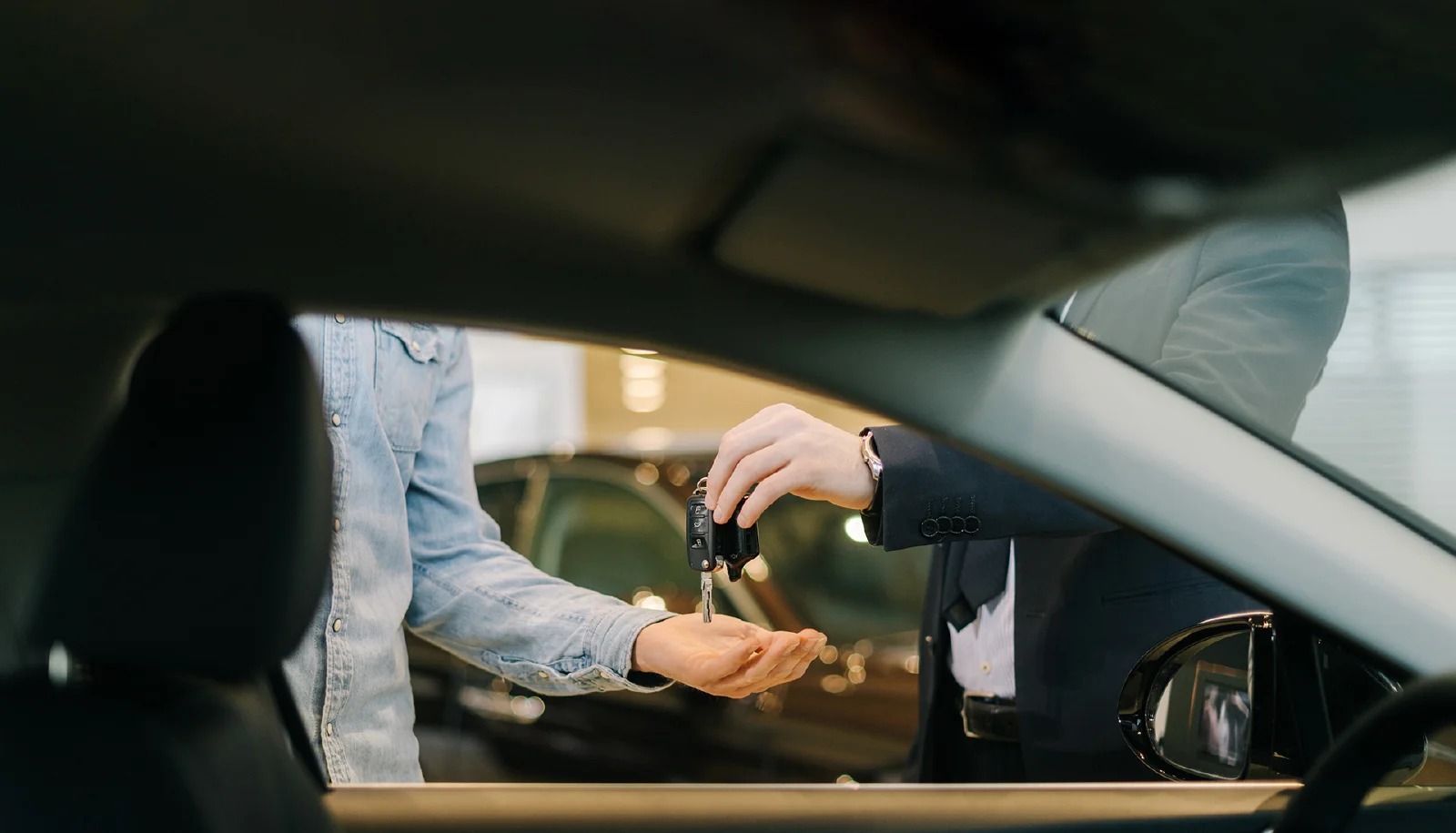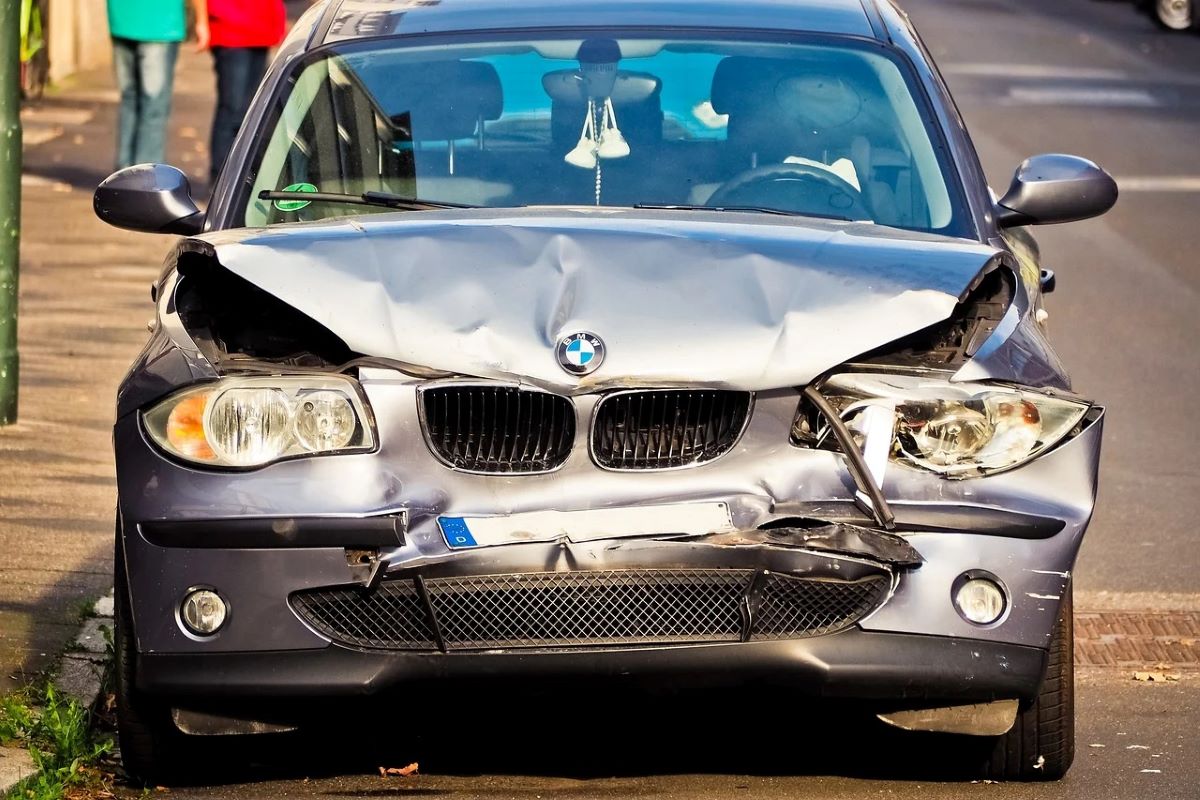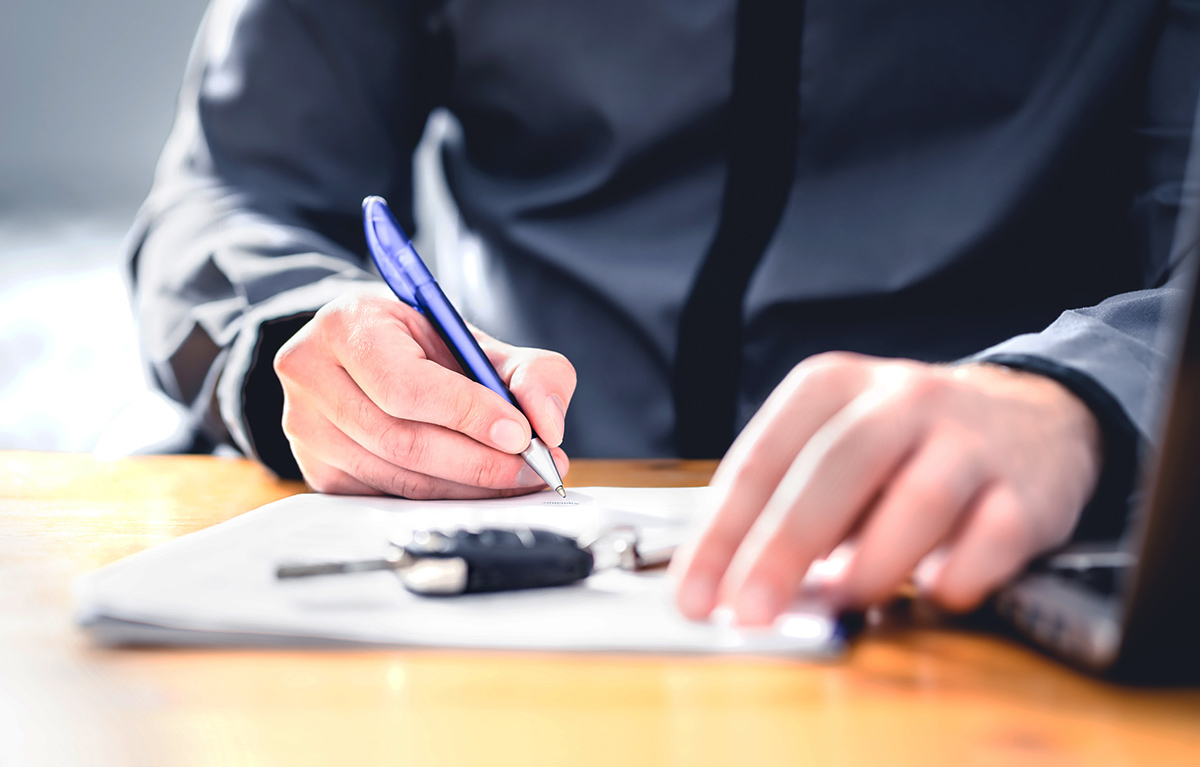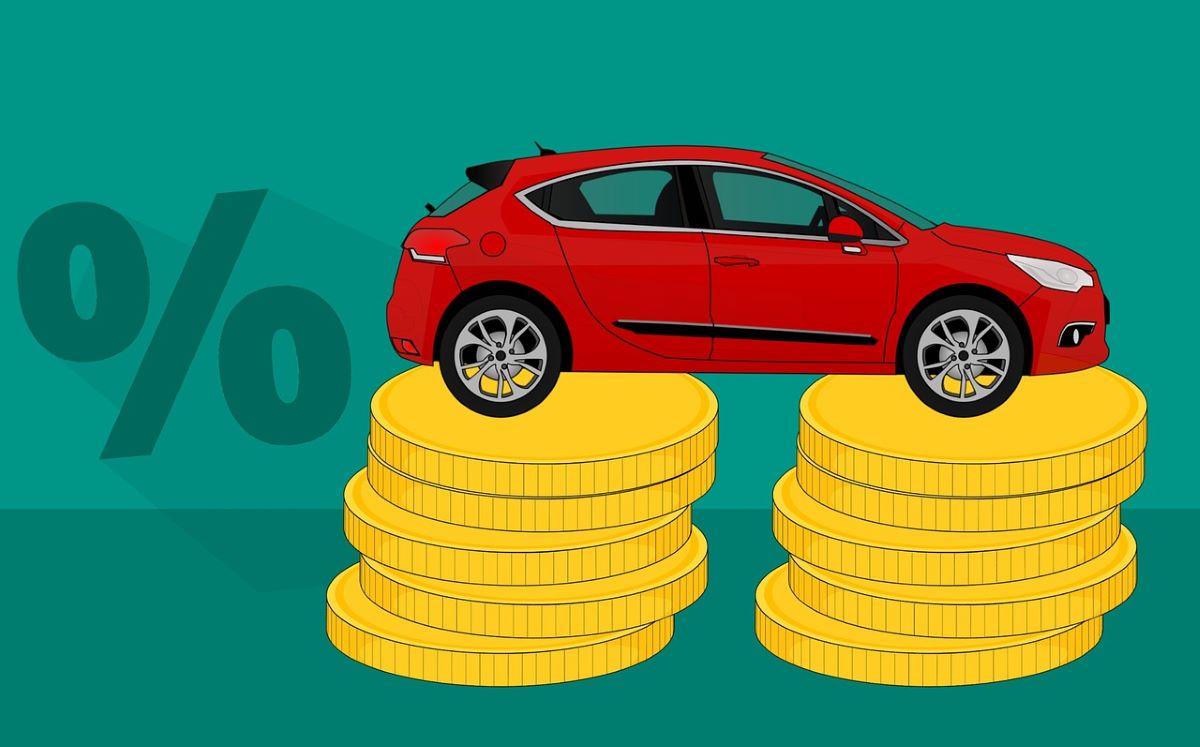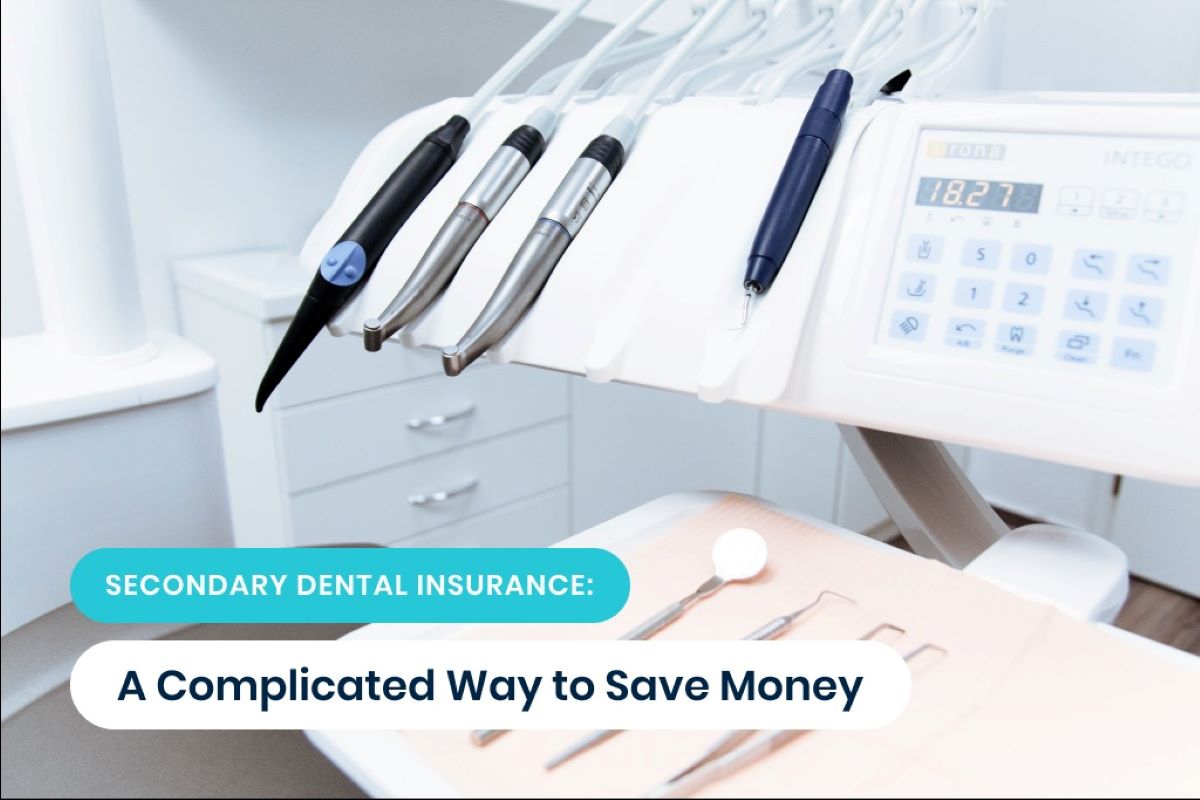Home>Finance>How To Buy Salvage Cars From Insurance Companies
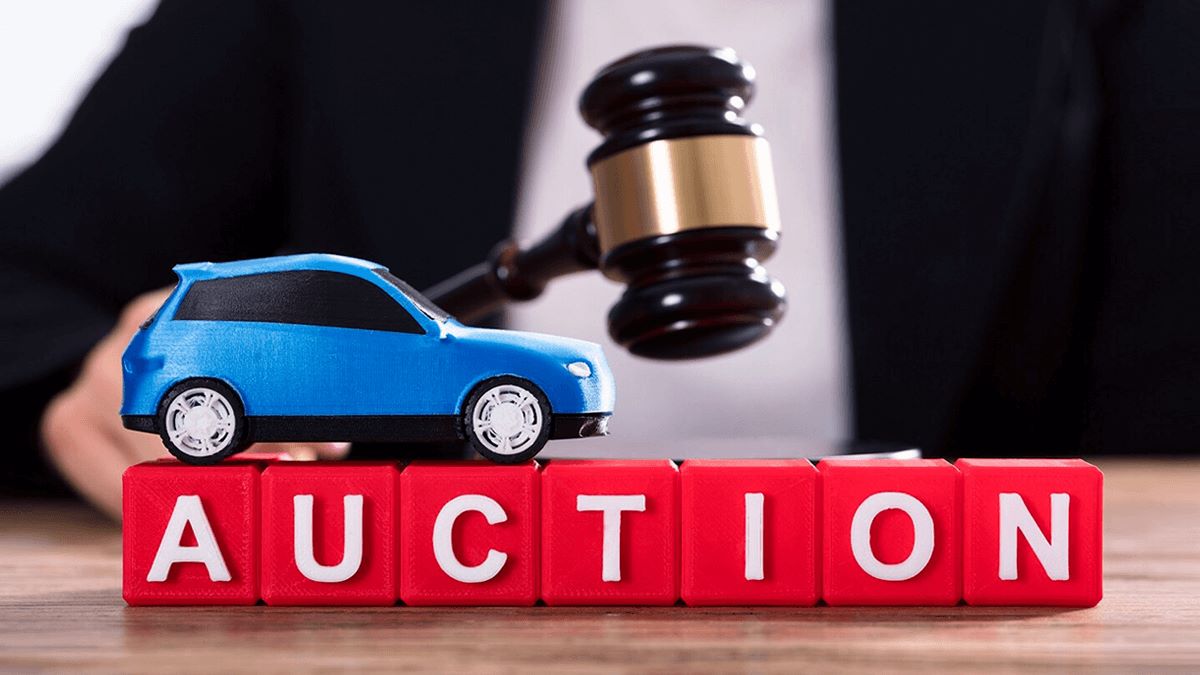

Finance
How To Buy Salvage Cars From Insurance Companies
Published: November 16, 2023
Learn how to finance the purchase of salvage cars from insurance companies with our comprehensive guide. Find the best deals and salvage car financing options.
(Many of the links in this article redirect to a specific reviewed product. Your purchase of these products through affiliate links helps to generate commission for LiveWell, at no extra cost. Learn more)
Table of Contents
- Introduction
- Understanding Salvage Cars
- Benefits of Buying Salvage Cars from Insurance Companies
- Factors to Consider Before Buying Salvage Cars
- Researching Insurance Companies and Salvage Auctions
- Bidding and Purchasing Process
- Documentation and Legalities
- Inspection and Evaluation of Salvage Cars
- Preparing for Salvage Car Restoration
- Safety Considerations and Risks
- Selling Salvage Cars for Profit
- Conclusion
Introduction
When it comes to buying a car, most people think of visiting a dealership or browsing online classifieds. However, there is another option that can save you a significant amount of money – buying salvage cars from insurance companies. Salvage cars are vehicles that have been declared a total loss by insurance companies due to damage from accidents, natural disasters, or other events.
While the thought of buying a car labeled as salvage may raise some concerns, it can actually be a smart financial move if done properly. Insurance companies often sell salvage cars at a fraction of their market value, offering an opportunity for savvy buyers to acquire a vehicle at a heavily discounted price.
In this article, we will delve into the world of salvage cars and provide you with a comprehensive guide on how to buy them from insurance companies. We will discuss the benefits of purchasing salvage cars, the factors to consider before making a purchase, as well as the steps involved in researching, bidding, and purchasing. We will also explore the legalities and documentation required, the importance of inspecting and evaluating the condition of salvage cars, and the necessary preparations for restoration. Additionally, we will touch on the safety considerations and risks involved in buying salvage cars, as well as the potential for selling them for profit.
By the end of this article, you will have a thorough understanding of the process and considerations involved in buying salvage cars from insurance companies, allowing you to make an informed decision and potentially save a significant amount of money on your next vehicle purchase.
Understanding Salvage Cars
Before diving into the process of buying salvage cars from insurance companies, it’s important to have a clear understanding of what exactly constitutes a salvage car. A salvage car is a vehicle that has been damaged to the extent that the cost of repair exceeds its market value or its value as determined by the insurance company.
Salvage cars can be categorized into different levels of damage, ranging from minimal to severe. The exact categorization can vary between insurance companies, but generally, you will encounter the following designations:
- Minimal Damage: These are vehicles that have experienced minor damage, such as a small dent or scratches. While the repairs needed are relatively minor, the insurance company has deemed the cost of repair to exceed the value of the car.
- Moderate Damage: Cars in this category have sustained more significant damage, such as a broken windshield or damage to the body panels. The repairs required are more extensive, but the vehicle may still be salvageable.
- Severe Damage: These are vehicles that have suffered significant damage, such as a bent frame, engine failure, or extensive structural damage. The repairs required are extensive and costly, making the vehicle a total loss in the eyes of the insurance company.
It’s important to realize that the categorization of salvage cars doesn’t necessarily indicate the drivability or functionality of the vehicle. While some salvage cars may be inoperable due to the extent of the damage, others may still be capable of functioning. However, keep in mind that salvage cars often require repairs and may have hidden issues that need to be addressed.
When considering buying a salvage car, it’s essential to carefully evaluate the level of damage and assess whether the repairs needed are within your budget and skill level. It’s also crucial to factor in the availability and cost of replacement parts, as some salvage cars may require specific components that are hard to come by.
Before purchasing a salvage car, it’s recommended to obtain a vehicle history report to get a detailed record of the damage, previous ownership, and any potential liens or outstanding issues. This information can help you make an informed decision and avoid any surprises down the line.
By understanding the different levels of damage and carefully assessing the condition of a salvage car, you can make a more informed decision and determine if buying a salvage car aligns with your budget and ability to repair and restore the vehicle.
Benefits of Buying Salvage Cars from Insurance Companies
Buying salvage cars from insurance companies can offer several advantages for budget-conscious buyers and car enthusiasts alike. While salvage cars may initially seem like a risky choice, there are compelling reasons why purchasing a salvage car can be a viable option:
- Cost Savings: One of the primary benefits of buying salvage cars is the significant cost savings. Insurance companies sell salvage cars at a fraction of their market value, often at prices well below their actual worth. This allows buyers to acquire a vehicle at a heavily discounted price.
- Opportunity for Repair and Restoration: Salvage cars provide a unique opportunity for car enthusiasts and hobbyists to unleash their creativity and carry out repairs and restorations. For those with the requisite mechanical skills and passion for automobiles, salvaging a damaged car can be a rewarding and fulfilling project.
- Parts Availability: Salvage cars can also be a great source of spare parts. If you own a similar make and model, purchasing a salvage car can provide you with an abundance of spare parts at a fraction of the cost compared to buying them new. This can be particularly beneficial for older or rare models where finding original parts can be challenging and expensive.
- Unique and Rare Finds: Salvage cars can sometimes include unique or rare models that are no longer in production. If you’re a collector or enthusiast looking for a specific vehicle, buying a salvage car may be your best chance to acquire that particular model.
- Customization Opportunities: Salvage cars offer the freedom to customize and personalize your vehicle to your liking. Whether it’s a full restoration or custom modifications, salvage cars can serve as a great canvas for creating a unique and personalized ride.
- Eco-Friendly Choice: By salvaging and repairing a damaged car, you contribute to reducing automotive waste and the environmental impact of manufacturing new vehicles. Salvaging a car helps prolong its lifespan and minimizes the need for new resources and materials.
While there are definite benefits to buying salvage cars, it’s essential to approach the process with caution and conduct thorough research. Salvage cars come with their own set of risks and challenges, such as hidden damage, vehicle history issues, and potential difficulty in obtaining insurance. Therefore, it’s crucial to carefully evaluate the condition of the salvage car, understand the costs and potential repairs involved, and assess whether it aligns with your budget and goals.
By weighing the benefits against the risks and considering your personal circumstances, buying a salvage car from an insurance company can be a cost-effective and rewarding choice for those willing to put in the effort to restore and bring new life to a damaged vehicle.
Factors to Consider Before Buying Salvage Cars
While buying salvage cars can offer significant cost savings and exciting restoration opportunities, it’s essential to consider several factors before making a purchase. By taking these factors into account, you can make an informed decision and mitigate potential risks and challenges:
- Budget: Assess your budget and determine how much you are willing to spend on purchasing a salvage car and its potential repairs. Remember to consider not only the purchase price but also the cost of replacement parts, labor, and any unforeseen expenses that may arise during the restoration process.
- Level of Damage: Carefully evaluate the level of damage to the salvage car. Determine if the repairs needed are within your skill level and budget. Consider consulting with a trusted mechanic or professional to assess the extent of the damage and estimate the costs associated with the repairs. Be realistic about your ability to handle the necessary repairs or seek professional help if needed.
- Vehicle History and Title: Obtain a vehicle history report to understand the car’s previous history, including any accidents or damage it has sustained. Research the vehicle’s title status as well, as certain title designations may impact its value and resale potential.
- Availability of Parts: Research the availability and cost of replacement parts for the salvage car you are interested in. Some salvage cars may require specific components that are rare or hard to find, driving up the cost of repairs. Ensure that the necessary parts are accessible and affordable before committing to the purchase.
- Insurance and Registration: Investigate the potential challenges in insuring and registering a salvage car. Some insurance companies may have restrictions or higher premiums for salvaged vehicles due to their history of damage. Additionally, certain states have specific regulations and requirements for registering and operating salvage cars on public roads.
- Potential Resale Value: Consider the potential resale value of the salvage car if you plan to sell it in the future. Some salvage cars, especially those that have been fully restored, can fetch a higher price on the market, while others may have limited resale potential. Research similar models and their resale values to gauge the potential return on your investment.
- Personal Skills and Resources: Honestly assess your mechanical skills, time availability, and tool resources. Restoring a salvage car can be a time-consuming and labor-intensive process that requires dedication and expertise. If you lack the necessary skills and resources, be prepared to invest in professional help or consider a less extensive restoration project.
By carefully considering these factors, you can make a well-informed decision about whether buying a salvage car aligns with your budget, skills, and goals. Remember to be realistic about the challenges and potential risks involved and seek professional guidance when needed. With proper planning and thorough research, buying a salvage car can be a rewarding and cost-effective venture.
Researching Insurance Companies and Salvage Auctions
Before diving into the process of buying salvage cars from insurance companies, it’s crucial to conduct thorough research to find reputable insurance companies and salvage auctions. By investing time in research, you can ensure a smoother and more successful purchasing experience. Here are some important steps to consider:
- Identify Reputable Insurance Companies: Start by identifying insurance companies that offer salvage cars for sale. Look for well-established and reputable companies that have a track record of selling salvage vehicles. Check online reviews, forums, and recommendations from experienced buyers to get an idea of the reputation and reliability of different insurance companies.
- Check Insurance Company Policies and Procedures: Once you have identified potential insurance companies, familiarize yourself with their policies and procedures regarding salvage car sales. Understand their bidding process, payment requirements, and any conditions or restrictions they may have for buyers. Some insurance companies may require proof of business or dealer licenses for certain types of salvage car purchases.
- Research Salvage Auctions: Many salvage cars are sold through auctions. Research and identify salvage auctions in your area or online platforms that specialize in salvage car sales. Look for well-established and reputable auction houses that have a wide selection of salvage cars and a transparent bidding process. Read reviews and check buyer feedback to assess the credibility of the auction platforms.
- Attend Salvage Auctions: If possible, consider attending salvage auctions in person to get a firsthand experience of the bidding process and the condition of the vehicles. This will give you a better understanding of the competition and allow you to inspect the salvage cars up close. If attending in person is not feasible, make sure to carefully review all available information, photos, and condition reports provided by the auction platform.
- Compare Prices and Conditions: When researching insurance companies and salvage auctions, compare prices and conditions of the salvage cars available. Be mindful of the level of damage, vehicle make and model, mileage, and any additional factors that may impact the value of the vehicle. Compare prices with similar models in the market to ensure you are getting a fair deal.
- Obtain Additional Information: Reach out to the insurance companies or salvage auction platforms to obtain additional information about the salvage cars you are interested in. Ask for detailed condition reports, vehicle history reports, and any available documentation that can help you make an informed decision.
By conducting thorough research on insurance companies and salvage auctions, you can identify reputable sources to purchase salvage cars. This will increase your chances of finding quality salvage vehicles at competitive prices. Remember to be diligent in your research, compare options, and gather as much information as possible to ensure a successful buying experience.
Bidding and Purchasing Process
Once you have identified a salvage car you are interested in, it’s time to navigate the bidding and purchasing process. This process may vary depending on the insurance company or salvage auction platform you are dealing with, but here are some general steps to guide you through:
- Registration: If required, register with the insurance company or salvage auction platform to participate in the bidding process. Provide any necessary personal information and documentation, such as proof of identity and a valid driver’s license.
- Set a Budget: Determine your budget for the salvage car, including the maximum amount you are willing to bid and any additional costs for repairs and restoration. Stick to your budget to avoid overpaying for the vehicle.
- Inspect the Salvage Car: Before placing a bid, if possible, thoroughly inspect the salvage car to assess its condition. Take note of any visible damage or potential issues that may require repairs. If attending an auction in person, bring a mechanic or experienced buyer to provide professional advice.
- Research the Vehicle: Conduct a comprehensive vehicle history check to uncover any hidden issues or previous damage. Check for any liens or outstanding claims on the salvage car, as these can have legal implications. Understand the salvage title designation and any specific regulations associated with it in your state or country.
- Place Your Bid: Once you are confident about the salvage car and have done your research, it’s time to place your bid. Follow the instructions provided by the insurance company or salvage auction platform to submit your bid. Be mindful of any minimum bid requirements and bidding increments.
- Monitor the Bidding: Keep an eye on the bidding process to stay informed about competing offers. If necessary, adjust your bid accordingly to remain in the running for the salvage car. Be prepared for multiple rounds of bidding as others may outbid you.
- Winning the Auction: If your bid is the highest at the end of the auction, congratulations – you have won the salvage car! Follow the instructions provided by the insurance company or salvage auction platform to complete the purchase, including making the necessary payment within the specified timeframe.
- Pickup and Transportation: Coordinate with the insurance company or salvage auction platform to arrange for pickup or transportation of the salvage car. Be prepared to provide proof of insurance, as some states may require it for transporting salvage vehicles. Ensure you have the appropriate equipment and means to safely transport the vehicle.
- Complete the Necessary Paperwork: Upon receiving the salvage car, complete all necessary paperwork to transfer ownership and obtain the salvage title. Follow the local regulations and guidelines for registering the salvage car in your name.
It’s important to note that the bidding and purchasing process may have specific terms and conditions set by the insurance company or salvage auction platform. Familiarize yourself with these requirements, such as payment methods, buyer’s fees, and any additional fees associated with the purchase. Be prepared to comply with all the necessary procedures to ensure a smooth and successful transaction.
By understanding the bidding and purchasing process, you can navigate the buying journey with confidence and increase your chances of securing a salvage car at a competitive price.
Documentation and Legalities
Buying a salvage car involves certain documentation and legal requirements that need to be fulfilled. It is important to adhere to these processes to ensure a smooth transaction and to comply with local regulations. Here are some of the key documentations and legalities to consider:
- Sale Agreement: Once you have successfully purchased the salvage car, the insurance company or salvage auction platform may require you to sign a sale agreement. This agreement outlines the terms and conditions of the sale, including the purchase price, payment details, and any additional provisions specific to the salvage car.
- Title Transfer and Salvage Title: The salvage car will typically come with a salvage title, indicating that it has been deemed a total loss by the insurance company. Ensure that the necessary title transfer documentation is completed to transfer ownership from the insurance company or auction platform to your name.
- Vehicle Registration: Depending on your local jurisdiction, you may need to register the salvage car with the appropriate government agency. This includes providing the required documents, such as proof of ownership, identification, and insurance. Familiarize yourself with the specific requirements in your area and follow the necessary steps for registration.
- Insurance Coverage: Insuring a salvage car may be more complicated than insuring a regular vehicle. Some insurance companies are hesitant to provide coverage for salvage cars due to their history of damage. However, specialty insurance companies and salvage vehicle insurers may offer coverage options. Shop around and obtain insurance quotes to find the best policy that meets your needs.
- Vehicle Identification Number (VIN) Verification: In some cases, you may be required to complete a VIN verification process to ensure the salvage car’s identity matches the documentation. This typically involves having the vehicle inspected by a designated authority or certified inspector.
- Temporary License Plates: Depending on your location, temporary license plates or permits may be required to legally drive the salvage car on public roads. Check the local regulations and obtain the necessary temporary plates to comply with the law while transporting the vehicle.
- State Lemon Laws: Familiarize yourself with your state’s lemon laws, which provide protection for consumers who unknowingly purchase defective vehicles. Although salvage cars are generally sold “as-is,” understanding your rights and the available recourse is important in case you encounter major undisclosed damage or issues with the salvage car.
It is crucial to consult with your local Department of Motor Vehicles (DMV) or relevant authorities to ensure you have all the necessary documents and comply with the legal requirements for owning and operating a salvage car. They can provide specific guidance and information on local regulations and processes to follow.
By adhering to the proper documentation and legalities, you can ensure that your purchase of a salvage car is legitimate, and that you have all the necessary paperwork in order to register and operate the vehicle within the confines of the law.
Inspection and Evaluation of Salvage Cars
Before finalizing your purchase of a salvage car, it is crucial to thoroughly inspect and evaluate its condition. Salvage cars can have hidden damage or underlying issues that may impact their value and feasibility for restoration. Here are some important steps to consider during the inspection and evaluation process:
- Visual Inspection: Start by visually inspecting the salvage car inside and out. Look for signs of damage, such as dents, scratches, or misaligned body panels. Pay attention to structural components, including the frame and suspension, as they are critical for the car’s integrity.
- Mechanical Inspection: If possible, conduct a mechanical inspection of the salvage car. Assess the engine’s condition, transmission, brakes, and other essential mechanical components. Check for leaks, unusual noises, or signs of previous repairs that may indicate underlying issues.
- Electrical and Electronic Systems: Inspect the electrical and electronic systems of the salvage car, including the lights, audio system, climate control, and any other features specific to the vehicle. Make sure all systems are functioning properly and evaluate the cost and feasibility of repairing or replacing any faulty components.
- Frame and Structural Damage: Pay close attention to the frame and structural components of the salvage car. Look for any signs of damage or repair work. Frame damage can significantly impact the safety and structural integrity of the vehicle, so it’s crucial to assess the extent and potential cost of repairing such damage.
- Interior Condition: Evaluate the condition of the salvage car’s interior. Check for any damage to the upholstery, carpeting, dashboard, and other interior components. Determine if repairs or replacements are necessary and factor in the cost and time required for restoring the interior to acceptable standards.
- Test Drive: Whenever possible, take the salvage car for a test drive. Pay attention to how the car handles, accelerates, and brakes. Listen for any unusual noises or vibrations. A test drive can provide valuable insight into the overall condition and drivability of the salvage car.
- Professional Inspection: If you do not have the mechanical expertise to thoroughly inspect the salvage car, consider hiring a trusted mechanic or professional inspection service. They can provide a more detailed assessment and identify any potential issues that may be overlooked during a visual inspection.
During the inspection process, take detailed notes and photographs of any damage or issues you identify. This documentation will serve as a reference point and can be helpful when determining the cost and feasibility of repairs.
It’s important to reiterate that salvage cars are sold “as-is” with no guarantees, so you must assess the risks and potential costs associated with the salvage car’s condition. Use the information gathered during the inspection and evaluation process to determine if the salvage car aligns with your restoration goals and if the repairs required are within your budget and skill level.
By conducting a thorough inspection and evaluation of the salvage car, you can make an informed decision and ensure that you are fully aware of the condition and potential challenges associated with the vehicle before proceeding with the purchase.
Preparing for Salvage Car Restoration
Restoring a salvage car can be an exciting and rewarding project, but proper preparation is essential for a successful restoration. Before diving into the restoration process, consider the following steps to ensure a smooth and efficient restoration:
- Create a Detailed Plan: Start by creating a detailed plan for the restoration project. Identify the specific repairs and modifications you want to make, and establish a timeline for completing each task. Break down the project into manageable steps to stay organized and focused throughout the entire process.
- Research and Gather Resources: Conduct thorough research on the salvage car’s make and model. Familiarize yourself with its technical specifications, repair manuals, and any unique considerations for restoration. Gather the necessary tools, equipment, and replacement parts to ensure you have everything you need before starting the restoration.
- Set Up a Suitable Workspace: Create a dedicated workspace for the restoration project. Choose a well-ventilated area with ample lighting and enough space to work comfortably. Make sure you have access to the necessary tools and equipment, as well as storage solutions to keep your tools and parts organized.
- Establish a Budget: Determine a budget for the restoration project. Consider the cost of replacement parts, materials, paint, and any professional services you may require. Be prepared for unexpected expenses that may arise during the restoration process. Keeping a realistic budget in mind will help you manage costs and stay on track.
- Document and Label Parts: As you disassemble the salvage car, take detailed photographs and label each part and component. This documentation will help you during the reassembly process, ensuring that you correctly reinstall each part and minimizing the likelihood of errors or missing components.
- Practice Safety Measures: Prioritize safety throughout the restoration project. Wear appropriate safety gear, such as gloves, goggles, and a respirator, when working with chemicals, paint, or dusty materials. Follow safety guidelines when handling heavy components or using power tools.
- Maintain Regular Progress Updates: Track your progress and make regular updates to your restoration plan. Take note of completed tasks, challenges faced, and any adjustments needed. Regular progress updates will help you stay motivated and ensure that you are making steady progress toward completing the restoration.
- Seek Professional Help When Needed: Depending on the complexity of the restoration project, you may need to seek professional help for certain tasks. Whether it’s engine work, bodywork, or electrical repairs, consulting with experts can save you time, effort, and potential mistakes.
Remember to approach the restoration project with patience and flexibility. Unexpected issues may arise during the process, and it’s important to adapt and adjust your plan as needed to overcome any challenges that may come your way.
By properly preparing for the salvage car restoration, you can set yourself up for a successful and satisfying project. With careful planning, research, and attention to detail, you’ll be on your way to transforming a damaged salvage car into a vehicle that you can be proud of.
Safety Considerations and Risks
When embarking on the restoration of a salvage car, it is important to prioritize safety and be aware of the potential risks involved. While restoration can be a rewarding endeavor, it also comes with certain inherent hazards. Here are some key safety considerations and risks to keep in mind:
- Personal Protective Equipment (PPE): Always wear appropriate personal protective equipment (PPE) when working on the salvage car. This may include safety glasses, gloves, ear protection, and respiratory masks. PPE helps protect you from potential hazards such as chemicals, dust, airborne particles, and loud noises.
- Chemicals and Hazardous Materials: Restoration often involves working with chemicals and hazardous materials, including solvents, paints, rust dissolvers, and adhesives. Take caution when handling these substances, follow safety instructions and guidelines, and ensure proper ventilation in the workspace to minimize exposure to harmful fumes or vapors.
- Sharp and Heavy Objects: During the restoration process, you will come across sharp objects such as metal edges, shards of glass, or other debris. Handle these objects with care and use appropriate safety precautions to prevent cuts or injuries. Lift heavy objects cautiously and use mechanical aids when necessary to avoid strain or injury.
- Electrical Risks: When working on the electrical system of the salvage car, exercise caution. Disconnect the battery before conducting any electrical repairs, and follow proper procedures to avoid electrical shocks or short circuits. If you are uncertain about electrical work, consult a professional to ensure safety.
- Fire Hazards: Restoration often involves tasks that generate heat or sparks, such as welding or grinding. Take necessary fire safety precautions, including having a fire extinguisher readily available, keeping flammable materials away from the workspace, and being vigilant about potential fire hazards.
- Structural Integrity: Salvage cars may have compromised structural integrity due to previous damage. Take precautionary measures and use adequate support when working underneath or near the vehicle to avoid any unexpected collapses or accidents.
- Knowledge and Skill Level: Only undertake restoration tasks that match your knowledge and skill level. If you lack the expertise or experience to perform certain repairs, enlist the help of a qualified professional. Attempting complex repairs without the necessary know-how can lead to personal injury or further damage to the vehicle.
- Safe Workspace: Maintain a clean and organized workspace to minimize accidents. Keep tools, equipment, and other potential hazards properly stored to reduce the risk of tripping or falling. Take regular breaks to reduce fatigue and maintain focus and concentration while working on the salvage car.
Additionally, it is important to note that salvage cars may have hidden damage or unknown issues that can add to the complexity of the restoration and pose unforeseen risks. Thoroughly inspect the salvage car and consult with professionals or experienced enthusiasts to gain insight into potential challenges or risks specific to the make and model.
Remember, restoration projects require patience, attention to detail, and respect for safety protocols. By staying aware of the potential risks and taking necessary precautions, you can minimize hazards and ensure a safe restoration process.
Selling Salvage Cars for Profit
While many individuals restore salvage cars for personal enjoyment or as a hobby, there is also the potential to sell salvage cars for profit. Selling salvage cars can be a way to recoup your investment, make a profit, or finance future restoration projects. Here are some key considerations when selling salvage cars:
- Quality of Restoration: The quality of the restoration plays a significant role in determining the selling price of a salvage car. Attention to detail, using high-quality parts, and ensuring proper functionality can greatly increase the value and desirability of the vehicle.
- Market Research: Conduct thorough market research to determine the value of similar salvage cars in your area or on online platforms. Analyze pricing trends, consider mileage, condition, and modifications made during the restoration process. This will help you establish a competitive and realistic asking price for your salvage car.
- Marketing and Advertisement: Proper marketing and advertisement can increase the visibility of your salvage car and attract potential buyers. Utilize online classifieds, social media platforms, and automotive forums to showcase your restoration work and reach a wider audience. Include detailed descriptions, high-quality photographs, and relevant information about the salvage car’s history and restoration.
- Title Status and Disclosures: Be transparent about the salvage title status of the vehicle and provide any necessary disclosures. Potential buyers should have all the relevant information about the salvage car, including its history, previous damage, and repairs performed. Honesty and transparency will build trust with buyers and increase the likelihood of a successful sale.
- Inspections and Test Drives: Allow potential buyers to inspect the salvage car thoroughly and, if appropriate, take it for a test drive. Make sure they have a clear understanding of the condition, functionality, and drivability of the vehicle. Encourage them to ask questions and address any concerns they may have.
- Negotiation and Flexibility: Be prepared to negotiate the selling price with potential buyers. Understand the market value of your salvage car and establish your ideal selling price. However, be willing to consider reasonable offers and be flexible in finding a mutually beneficial agreement.
- Legalities and Documentation: Make sure all necessary legalities and paperwork are in order. Transfer the salvage title to the new owner, complete the bill of sale, and follow local regulations and guidelines for selling a salvage car. Be prepared to provide any additional documentation, such as repair records or receipts, to demonstrate the work done during the restoration process.
- Safety Considerations: Prioritize safety when selling a salvage car. If potential buyers request a test drive, ensure they are qualified and have the appropriate driver’s license and proof of insurance. Consider meeting in public, well-lit locations to ensure personal safety during the transaction.
It’s also worth exploring different selling avenues such as consignment sales, local auction houses, or online platforms specializing in salvage car sales. Each platform has its own pros and cons, so consider the level of exposure, fees involved, and the target audience when choosing the right selling option.
Selling salvage cars for profit requires careful consideration, diligent marketing, and adherence to legal and ethical practices. By putting in the effort, demonstrating transparency, and satisfying potential buyers with a well-restored salvage car, you can increase your chances of a successful and profitable sale.
Conclusion
Buying salvage cars from insurance companies can be a cost-effective way to acquire a vehicle at a significantly reduced price. Salvage cars offer unique opportunities for restoration, customization, and potential profits. However, it’s important to approach the process with thorough research, careful evaluation, and a realistic understanding of the risks involved.
Understanding salvage cars and their various levels of damage is crucial in determining the feasibility of repairs and restoration. Evaluating the condition, researching insurance companies and salvage auctions, and considering factors like budget, availability of parts, and potential resale value are key steps to take before making a purchase.
Throughout the process, prioritize safety considerations, comply with legalities, and be aware of the potential risks and challenges associated with salvage cars. Thorough inspection and evaluation of the salvage car’s condition, along with proper planning and preparation, are vital in ensuring a successful restoration project.
For those considering selling salvage cars, market research, effective marketing strategies, and transparency in disclosing the salvage title status are essential for attracting potential buyers and securing a fair selling price.
In conclusion, buying salvage cars from insurance companies can be a rewarding venture for both car enthusiasts and budget-conscious buyers. It offers a unique opportunity to save money, unleash your creativity, and potentially earn profits. With thorough research, careful evaluation, and adherence to safety and legal considerations, you can navigate the process successfully and enjoy the journey of salvaging, restoring, and potentially selling a vehicle that has been given a second chance.
